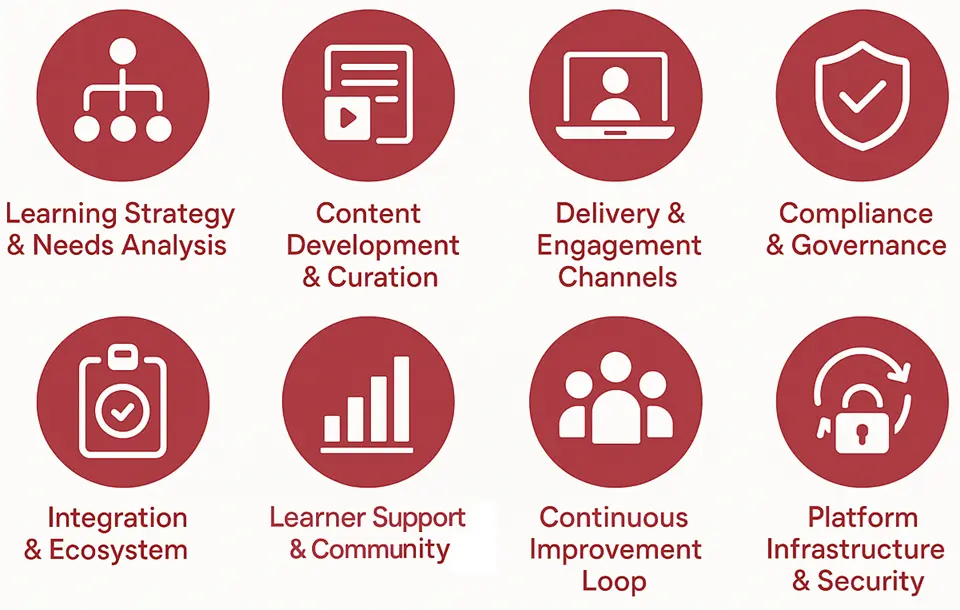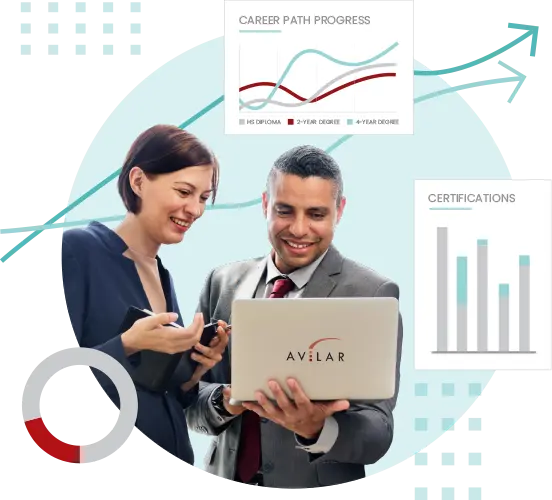COMPLIANCE LMS
A beginner's roadmap to understanding how learning management works, the key components to consider, and more tips and best practices.

Henry Ford
What Is Learning Management?
Learning management is both the art and science of designing, delivering, and continuously improving training programs that help people grow in their roles. At its heart sits a compliance Learning Management System (LMS), a platform that organizes everything from course creation and enrollment to progress tracking and certification.
But true learning management extends beyond software: it's about defining clear learning goals, aligning content to business outcomes, and crafting experiences that engage diverse audiences—whether you're onboarding employees, educating channel partners, or upskilling customers.
Key Elements of Learning Management

What Is a Compliance LMS (Learning Management System)?
A Compliance LMS (Learning Management System) is a specialized training platform designed to help organizations meet regulatory requirements and industry standards.
Beyond simply hosting courses, a compliance LMS automates assignment of required training, tracks completions with audit-ready logs, issues certificates, and alerts managers when refreshers are due—all to keep your workforce up to date with laws, policies and best practices. By centralizing compliance content and reporting, it reduces risk and saves administrative time.

Top 10 Compliance LMS Features, Ranked by Priority
(Click each one to see its description.)
Immutable, timestamped records of who took what, when and how—complete with IP addresses and version history—to prove compliance under audit.
Automatic certificate generation upon completion, plus scheduled reminders and workflows to handle expirations and re-training.
Rules-based triggers that enroll employees in required courses based on role, location or certification expiration dates—so nothing falls through the cracks.
Pre-built and custom reports that surface compliance gaps, overdue trainings and overall audit readiness at a glance.
Encryption at rest and in transit, plus adherence to SOC-2, ISO 27001, GDPR and other data-protection standards to safeguard sensitive records.
Built-in acknowledgements or electronic signatures to confirm learners have read and agreed to updated policies and procedures.
Pre-tests to identify knowledge gaps, automated assignment of remedial training and progress tracking to demonstrate improvement.
Sync employee data—like hire dates, job codes and location—to ensure assignments stay accurate as your workforce evolves.
Track changes to courses and policies over time, with the ability to archive prior versions for future audits or legal reference.
Access to off-the-shelf compliance courses (e.g., HIPAA, OSHA, GDPR, Anti-Harassment) that are regularly updated to reflect evolving regulations.
Learning Management Tips & Best Practices
Your LMS lays the groundwork for effective training—when you pair it with a competency management system, you unlock targeted, measurable upskilling that drives real business impact.
Discover the full strategy in our free eBook.

—Brandon Hall and E-Learning Magazine
Next Steps to Transform Your Workforce
Follow these three simple steps to streamline compliance, upskill your teams, and drive real business impact.
1. Download the Upskilling eBook.
Get proven strategies to pair your LMS with competency management.
2. See WebMentor LMS™ in Action.
Book a personalized demo of our tailored LMS.
3. Implement Your Customized Solution.
Deploy and optimize WebMentor LMS for your workflows.


